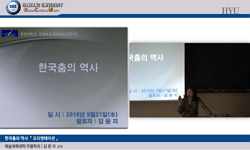Vladimir Tikhonov’s(Park, No-ja) monograph, The Red Decades: Communism as Movement and Culture in Korea, 1919-1945, shows how during the Japanese colonial period, many Korean intellectuals accepted Communist ideology as a new culture, recognizing it...
http://chineseinput.net/에서 pinyin(병음)방식으로 중국어를 변환할 수 있습니다.
변환된 중국어를 복사하여 사용하시면 됩니다.
- 中文 을 입력하시려면 zhongwen을 입력하시고 space를누르시면됩니다.
- 北京 을 입력하시려면 beijing을 입력하시고 space를 누르시면 됩니다.

The Red Decades가 보여 준 일제강점기 한국 공산주의자들의 이상과 실현, 그리고 현실 = The Idealism, Achievement, and Reality of the Korean Communist Movement during the Japanese Colonial Era
한글로보기https://www.riss.kr/link?id=A109433014
-
저자
송준서 (한국외국어대학교 러시아연구소)
- 발행기관
- 학술지명
- 권호사항
-
발행연도
2024
-
작성언어
Korean
-
주제어
Communist Movement ; Japanese Colonial Era ; Korea ; Soviet Union ; 공산주의운동 ; 일제강점기 ; 한국 ; 소련
-
등재정보
KCI등재
-
자료형태
학술저널
-
수록면
23-41(19쪽)
- DOI식별코드
- 제공처
-
0
상세조회 -
0
다운로드
부가정보
다국어 초록 (Multilingual Abstract)
Vladimir Tikhonov’s(Park, No-ja) monograph, The Red Decades: Communism as Movement and Culture in Korea, 1919-1945, shows how during the Japanese colonial period, many Korean intellectuals accepted Communist ideology as a new culture, recognizing it as a model for an alternative modernity. During the interwar period, Communists used violence to respond to rampant state violence against their activities. In addition, Park emphasizes that the severe factionalism of the interwar Korean Communist movement was comparable to other countries, especially Germany. However, he argues that it contributed to concretizing the movement's theory, strategy, and tactics, laying the foundation for the social reform movement in South Korea after the Korean War. Although this argument could be strengthened with more evidence, the monograph expands the topic's geographical and time scope by locating it within a global movement, while connecting its legacy to postwar social and political movements.
동일학술지(권/호) 다른 논문
-
신자유주의 노동체제의 노동 통제와 민주노조운동 : 변절과 포섭의 정치사회학
- 경상국립대학교 사회과학연구원
- 노중기
- 2024
- KCI등재
-
유가적 마르크스주의(Confucian Marxism): 그 사유구조와 문화-정치적 징후에 관하여
- 경상국립대학교 사회과학연구원
- 피경훈
- 2024
- KCI등재
-
The Rise and Fall of State Feudalism in China
- 경상국립대학교 사회과학연구원
- 안잔 차크라바티
- 2024
- KCI등재
-
- 경상대학교 사회과학연구원(마르크스주의 연구)
- 류동민
- 2024
- KCI등재
분석정보
연관 공개강의(KOCW)
-

한국의 재난관리체계 (Disaster Management System in Korea)
K-MOOC 국가민방위재난안전교육원 NDTI Int'l Cooperation Team -

한국의 재난관리체계 (Disaster Management System in Korea)
K-MOOC 국가민방위재난안전교육원 NDTI Int'l Cooperation Team -

한국의 재난관리체계 (Disaster Management System in Korea)
K-MOOC 국가민방위재난안전교육원 NDTI Int'l Cooperation Team -

한국춤의 역사
한양대학교 김윤지 -

한국의 문화와 교육
중앙대학교 이성호




 DBpia
DBpia

